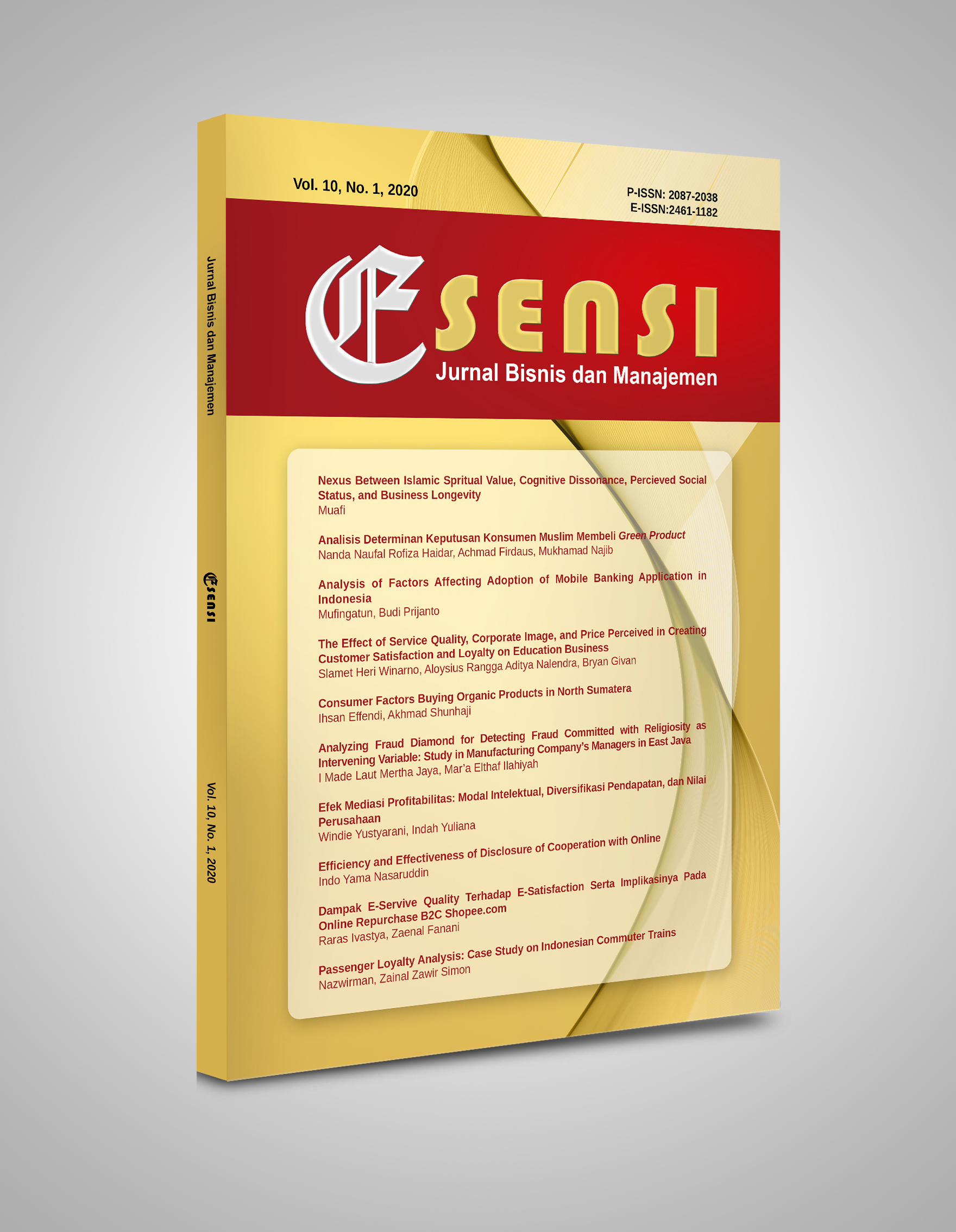Efficiency and Effectiveness of Disclosure of Cooperation with Online
DOI:
https://doi.org/10.15408/ess.v10i1.17826Keywords:
Efficiency, Effectiveness, Performance, Online servicesAbstract
This research measures the efficiency and effectiveness of the dissolution of cooperatives conducted online. To see the efficiency and effectiveness of using cooperative dissolution performance variables, utilization of online services, performance in online services and interest in utilizing online services for cooperatives in cooperative dissolution activities. The analysis technique used is descriptive analysis by looking at the percentage of answers from respondents. The object of this research is cooperatives that are listed as cooperatives which are dissolved in the area of East Java Province and Yogyakarta Special Region as regions that have many cooperative dissolutions. The results showed that the performance of the dissolution of cooperatives in the Special Region of Yogyakarta and East Java Province was an average of 3.53 in the predicate of moderate capacity. Utilization of online services is quite high. The performance of online services obtained the average results of respondents' answers of 4.09 are in the predicate of high capacity. Interest in the need for cooperative online services as an alternative to cooperative dissolution systems in the Special Region of Yogyakarta and East Java Province is high.
References
Afsar, A., Nasiri, Z., dan Zadeh, M. O. 2013. Eloyalty Model in e-Commerce. Mediterranean Journal of Social Science.4(9). Ssqw
Al- Hawari, M. A. 2014. Does customer sociability matter? Differences in equality, e-satisfaction, and e-loyalty between introvert and extravert online banking users. Journal of Services Marketing. 538-546.
Anderson, R.E. dan Srivinasan, S.S. 2003. ESatisfaction and E-loyalty: A Contingency
Framework. Journal of Pshycology & Marketing. 20(2). 123- 138.
Bastos, J A.R., and Gallego, P.M. 2008. Pharmacies Customer Satisfaction and Loyalty: A Framework Analysis. Journal of Marketing. Universidad de Salamanca.
Carlson, J. dan O’Cass. 2011. Developing a framework for understanding e-service
quality, its antecedents, consequences and mediators. Managing Service Quality: An International Journal. 21(3). 264-286.
Carlson, J., dan O'Cass, A. 2010. Exploring the relationships between e-service quality, satisfaction, attitudes and behaviours in content-driven e-service web sites. Journal of Service Marketing, 112-127.
Caruana, A. 2002. Service loyalty: The effects of service quality and mediating role of customer satisfaction. European Jounal of Marketing.36(7).811-828.
Chaffey, D., Ellis-Chadwick, F., Mayer, R., dan Johnston, K. 2009. Internet Marketing: Strategy, Implementation, and Practice. Italy: Pearson Education Limited.
Eid, M. I. (2011). Determinants of e-commerce customer satisfaction, trust, and loyalty in Saudi Arabia. Journal of Electronic Commerce Research. 78-93.
Ghane, S., Fathian, M., dan Gholamian, M. 2011. Full relationship among satisfaction,e-trust, e-service quality, and e-loyalty: The Case of Iran EBanking. Journal of Theoritical and Applied Information Technology. 3(1).
Gounaris, S., Dimitriadis, S., dan Sthathakopoulos, V. 2010. An examination of the effects of service quality and satisfaction on customers’ behavioral intentions in e-shopping. Journal of Service Marketing. 24(2), 142-156.
Jahanshahi, A. A. 2011. Study the effects of customer service and product quality on customer satisfaction and loyalty. International Journal of Humanities and Social Science. 1(7).253.
Jin, B., Park, J. Y., dan Kim, J. 2008. Crosscultural examination of the relationships among firm reputation, esatisfaction, e-trust, and e-loyalty. International Marketing Review. 324-337.
Kheng, L.L, Mahammad, O., Ramayah, T., dan Mosahab, R. 2010. The impact of service quality on customer loyalty: a study of banks in Penang, Malaysia. International Journal of Marketing Studies.2(2).57-66.
Malhotra, N. K. 2012. Basic Marketing Research Intregation of Social Media 4th Edition. USA. Pearson Education Inc, Prentice Hall.
Mittal, A. 2013. E-commerce: it’s impact on consumer behavior. Global Journal of Management and Business Studies. 3(2).131-138.
Mosahab, R., Mahamad, O., dan Ramayah, T. 2010. Service quality, customer satisfaction and loyalty: a test of mediation. International Business Research.3(4).
Ribbink, D., Riel, A. C. R., Liljander, V., dan Streukens, S. 2004. Comfort your online customer quality, trust andloyalty on the internet. Managing Service Quality: An International Journal. 4(6). 446-456.
Sanayei, A., & Jokar, A. 2013. Determining the Effect of Electronic Services Quality on Electronic Satisfaction and Positive Word of Mouth (Case Study: Different Branches of Shiraz Mellat BankCustomers. International Journal of Academic Research in Accounting, Finance and Management Sciences, 103-111.
Shankar, V., Smith, A.K., & Rangaswamy, A. 2003. Customer satisfaction and loyalty in online and offline environment. International Journal Research in Marketing, 20(2), 153-175.


